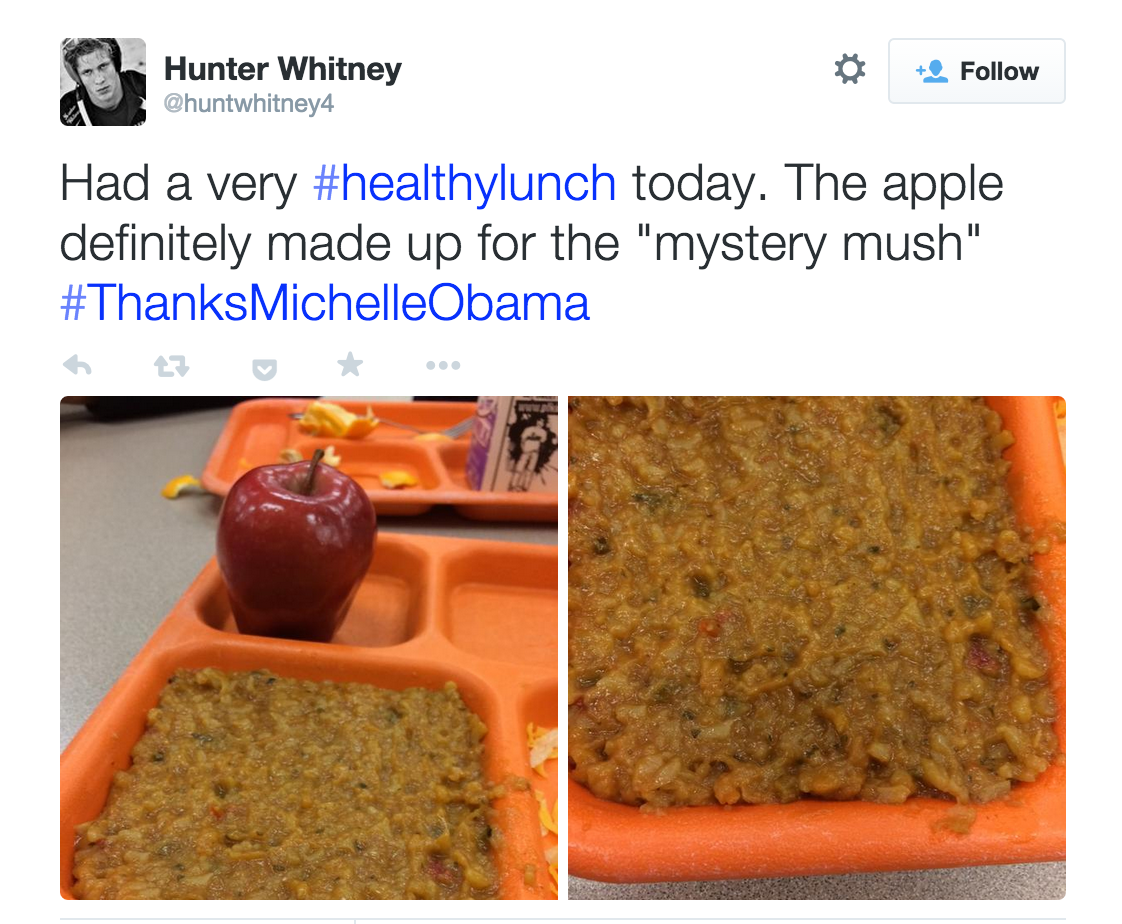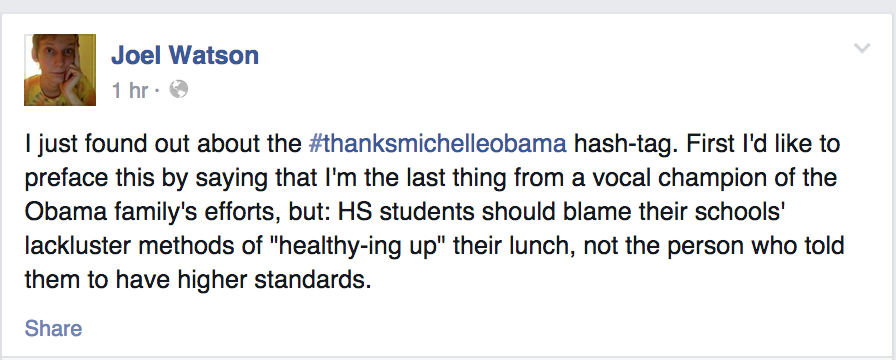Angry Teens Are Sarcastically Tweeting #ThanksMichelleObama for Encouraging Healthy Eating
By:
Students are engaging in a little civil protest today, sharing photos of their unappetizing school-cafeteria lunches under hashtag #thanksmichelleobama, referencing the First Lady's successful efforts to increase the nutritional standards of school lunches through her advocacy of the Healthy, Hunger Free Kids Act.

As one student pointed out, it's hard to pin the blame for these lunches on any one source:

Is it the fault of the federal government for passing these mandates or are schools just terrible at making healthy food appealing?
Or maybe it's students' fault for not wanting to eat healthy food. School cafeterias are seeing their children opt out of school lunch since the new standards were passed. Despite the reimbursement offered by the $11-billion National School Lunch program, some districts in upstate New York quit because their lunchrooms ended the year $100,000 in the red. It seems that some students are just not willing to give up on cheese fries.
"Many of these children have never seen or tasted some of the fruits and vegetables that are being served before, and it takes a while to adapt and learn," said Dr. Janey Thornton, deputy undersecretary for the USDA's Food, Nutrition, and Consumer Services.
And the result is that parents may be responding to their kids' distaste for healthy food by packing them unhealthy lunches.
But what is to be done when the Agriculture Department gets complaints that kids aren't getting enough to eat? Or when a 17-year-old in Kansas says that a lot of students "simply go across the street to the convenience store" to make up for what they lost in their lunches?
We know childhood obesity is a problem in the United States. On one hand, it's good to see lawmakers try to fix it. Recently, we wrote about the unique health measures (like soda taxes) passed by progressive cities such as Berkeley, CA. And yes, we have better standards at the federal level due to the new law pushed by Michelle Obama. This is all great news. Now, the problem is kids and their parents, who make dietary decisions for their children. A recent study published by Virginia Tech found that school-provided lunches actually fared better on nutritional tests than their parent-provided, packed-at-home counterparts. It turns out that parents are the ones giving chips, sweets, and sugary drinks to their children.
This is contrary to what seems to be a shifting cultural paradigm with regard to healthy eating.
"We thought that parents would send lunches that reinforced the sort of healthy habits we hope they are trying to establish at home," said Alisha Farris, one of the study's authors.
Another study, conducted by researchers at Tufts University this year, also found that parent-provided lunches are lagging in nutritional benefits. After surveying 12 schools in six public school districts in Massachusetts, the study found that only 27% of student lunches met at least three of the five National School Lunch Program (NSLP) guidelines.
Lunch is an integral to a child's diet and an important factor in overall health. Between one-third and one-half of a child's daily caloric intake can come from lunch. At the moment, around 40% of children eat lunches packed by their parents. This means parent-packed lunches are important to overall childhood health in the United States.
"When deciding what to pack, parents are juggling time, cost, convenience, and what is acceptable to their children," said Jeanne Goldberg, the study's senior author. "Unfortunately, these factors are not always in harmony with good nutrition."
Outside of banning pre-packed meals -- a nanny-state solution that no one seems to want -- what can schools do? Parents ultimately must make their own decisions about child-rearing.
Do you think school lunches should stick to the strict guidelines enforced by The National School Lunch Program even if their parents are helping them circumvent the system by packing processed foods at home?
